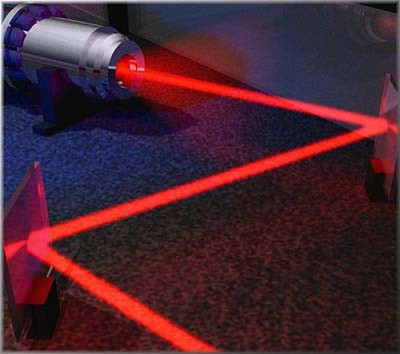New Laser Beam Detects Roadside Bombs

Roadside bombs or improvised explosive devices, killer of many U.S. soldiers in Iraq and Afghanistan, can now be detected before they explode from a safe distance by a laser beam, researchers from Michigan State University say.
The findings are published in the current issue of Applied Physics Letters.
The MSU team said the new laser beam has the sensitivity and selectivity to canvas large areas and identify the presence of the roadside bombs because every molecule has its own unique frequency of vibration. The newly found laser beam has the potential of sensing each vibration and scanning the ground from a safe distance.
Having molecular structure sensitivity is critical for identifying explosives and avoiding unnecessary evacuation of buildings and closing roads due to false alarms, said Marcos Dantus, a chemistry professor and founder of BioPhotonic Solutions who led the research.
Although detection is difficult because other compounds mask the few molecules the laser tries to detect, researchers combine short and long pulses of light to excite and listen to the fingerprint of individual molecules and identify different chords. This will help soldiers differentiate explosives from similar compounds and find them explosives in crowded urban environments.
We are using an ultrashort pulse that whenever it gets to the molecule at the target, it gives it a kick in a very, very short timescale; the molecule starts vibrating, Dantus said.
The laser beam can detect vibrations even for quantities as small as a fraction of a billionth of a gram, according to the university.
Dantus said the laser beam currently works at distances up to about 40 feet, which can be maximized up to 330 feet. Beyond that, we need engineers who know how to handle longer distances.
The laser and the method we've developed were originally intended for microscopes, but we were able to adapt and broaden its use to demonstrate its effectiveness for standoff detection of explosives, Dantus said.
The bomb-detecting technology is in development in the laboratory. The research was partially funded by the Department of Homeland Security. With additional funding, Dantus hopes to move the laser from the lab and out into the field within a year.
© Copyright IBTimes 2024. All rights reserved.





















